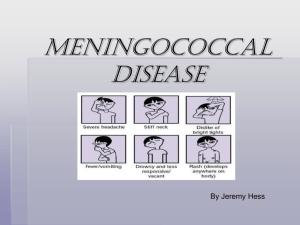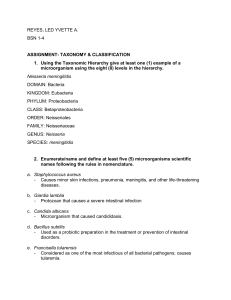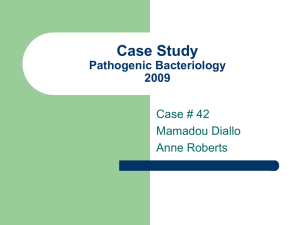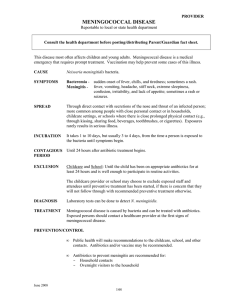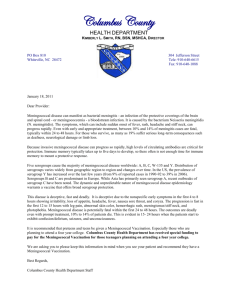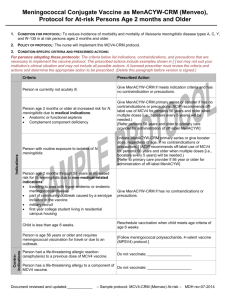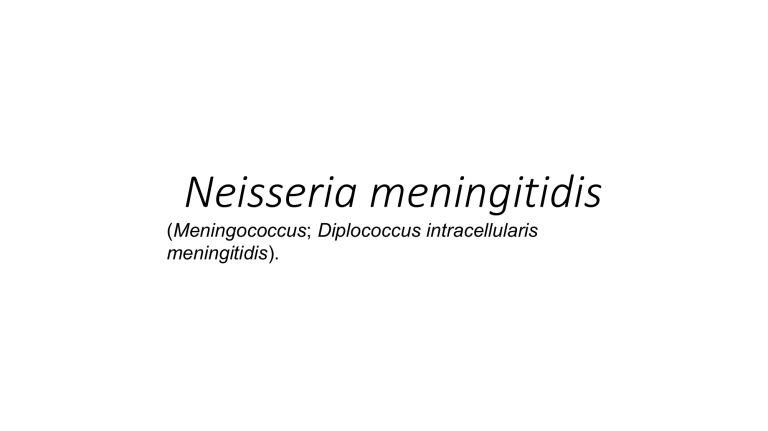
Neisseria meningitidis (Meningococcus; Diplococcus intracellularis meningitidis). Introduction • N. meningitidis is a major cause of serious bacterial infections in children. • N. meningitidis is a part of the normal nonpathogenic flora in the nasopharynx of up to 5–15% of adults. • It is capsulated gram negative cocci in pairs (diplococci) • Non-sporing • Non motile • 0.5- 1µm in size Figure 1: N. Meningitidis in cerebrospinal fluid. Transmission • Through air borne droplets • Close contact with infectious person • Reservoir: exclusively human Diseases it caused • Meningitis (main disease) • Meningococcaemia • Pneumonia • Arthritis Pathogenesis • Meningococci are strict human parasites inhabiting the nasopharynx. • Infection is usually asymptomatic. Stages of meningococcal infections 1. First stage: Nasopharyngeal infection 2. Second stage: Meningococcal septicaemia 3. Third stage: Meningitis Clinical manifestation • High temperature, fever, possibly with cold hands and feet • Vomiting • Diarrhoea • Severe headache • Joint or muscle pains • Neck stiffness • Drowsiness • Light sensitivity References • Surinder Kumar (2014). Textbook of Microbiology for Dental Students. New Delhi. Jaypee Brothers
